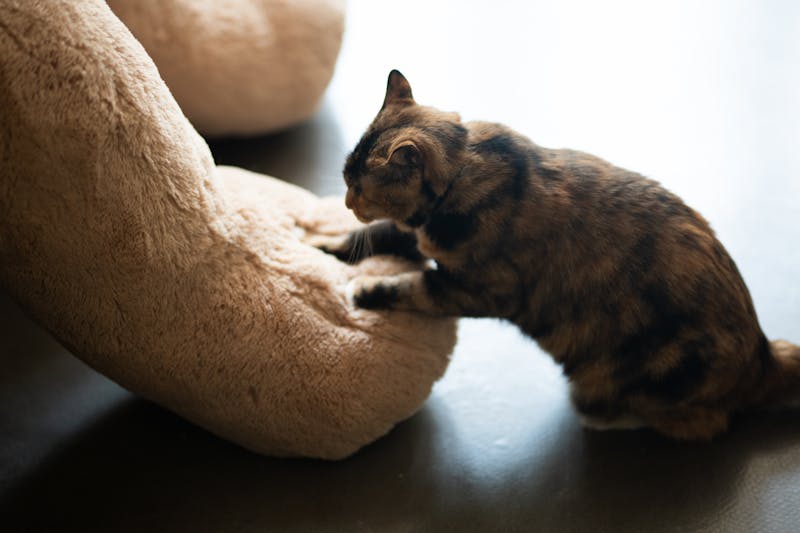Cats “make biscuits” by kneading with their paws, a behavior rooted in early kittenhood. This action helps them feel comfortable and secure, often signaling contentment or affection. When cats press their paws rhythmically onto soft surfaces, they may be marking their territory or preparing a cozy resting spot.
Kneading serves multiple purposes, including stimulating milk flow during nursing, expressing relaxation, and claiming a safe space. This instinctive gesture connects cats to their earliest life experiences and communicates their mood to those around them.
Understanding why cats knead helps deepen appreciation for their unique behaviors. Observing this habit reveals much about a cat’s emotional state and natural instincts, making it a fascinating topic for any cat owner or enthusiast.
Understanding Biscuit Making in Cats
Cats’ kneading behavior involves rhythmic paw movements with specific functions tied to their instincts and development. This action has clear biological roots and serves multiple purposes related to comfort, communication, and early life experiences.
What Is Biscuit Making Behavior?
Biscuit making, or kneading, is when cats press their paws alternately into a soft surface. They flex and extend their toes in a rhythmic pattern, often accompanied by purring or relaxed body language. The movement stimulates nerve endings in the paws and is not random but purposeful.
This behavior can indicate contentment and is often seen when cats settle down to rest. It also activates scent glands located in the pads of their paws, which helps mark the object or person they knead with their unique scent. Thus, it serves both emotional and territorial functions.
Origins of Kneading in Domestic Cats
Kneading originates from wild feline instincts related to survival and territory. In natural environments, cats knead to prepare sleeping areas by softening leaves or grass, creating a comfortable resting spot. This behavior likely enhanced their chance of staying hidden and safe.
The presence of scent glands in paw pads means kneading transfers a personal scent to an area. This marks territory clearly without confrontation. It also can function as a stress-relief mechanism, helping cats regulate emotions by repeating the familiar and soothing motion.
Developmental Roots in Kittens
Kneading begins in kittens during nursing. Newborn cats knead their mother’s belly to stimulate milk flow. This nursing reflex is instinctual and essential for survival in early weeks.
As kittens grow, this behavior shifts from a survival tool to a comfort behavior. It often continues into adulthood when cats knead soft objects or their human caregivers. This can reflect a feeling of safety and bonding, recalling the security experienced during nursing.
Reasons Cats Make Biscuits
Cats knead for several clear reasons. This behavior often reflects their emotional state, their instincts, or their way of communicating through physical actions. It can signal comfort, a territorial claim, or a natural, inherited reflex.
Comfort and Self-Soothing
Cats knead as a way to comfort themselves. The rhythmic motion of pushing their paws in and out is similar to how kittens knead their mother’s belly to stimulate milk flow. This association with nursing creates a calming effect for adult cats.
When a cat kneads, it may be trying to reduce stress or anxiety. This self-soothing behavior helps cats feel more secure in their environment. Often, cats will knead while resting or preparing a sleeping spot, reinforcing relaxation.
Marking Territory
Kneading also serves as a territorial behavior. Cats have scent glands in their paw pads, and when they knead surfaces, they release pheromones. This scent marks an area as theirs without any visible sign.
This method of marking is subtle but effective. It signals ownership to other cats and sometimes to other animals in the house. The behavior is more common on soft surfaces like blankets, couches, or even people since those spots retain scent better.
Expressing Contentment
Making biscuits is a strong indicator of a cat’s contentment and trust. Cats often knead when they feel relaxed, safe, and happy, such as when they are sitting on their owner’s lap.
This behavior functions as a nonverbal way to show affection and satisfaction. It can also be a way to bond with their human companions by involving physical contact during moments of closeness.
Instinctual Behaviors
Kneading is deeply rooted in instinct. It is a leftover action from wild ancestors who would press down grass or leaves to create a comfortable resting place. This behavior ensures the sleep area is soft and free of debris or insects.
In addition, kneading helps cats keep their claws sharp and flexible. The action also stretches their muscles after resting. Because this behavior begins very early in life, it is part of a cat’s natural repertoire that carries into adulthood.
Behavioral and Health Insights
Cats knead for different reasons, ranging from comfort to communication. Understanding the context of their kneading can reveal important clues about their emotional or physical state.
When Biscuit Making Indicates Stress
Kneading can sometimes signal that a cat feels anxious or stressed. When a cat repeatedly presses its paws into a surface while also showing signs like dilated pupils or flattened ears, it might be attempting to self-soothe. This behavior calms the cat by releasing endorphins.
Stress-related kneading often occurs in unfamiliar or uncomfortable environments. It is a coping mechanism that helps the cat regain a sense of security. Owners should look for patterns or triggers to address potential stressors in the cat’s environment.
Common Variations in Kneading Behaviors
Kneading varies among cats in intensity, frequency, and purpose. Some cats knead softly and slowly, while others apply more vigorous pressure. This difference can reflect their mood or the strength of their bond with the surface or person.
Cats tend to knead on soft surfaces, such as blankets or laps, often combined with purring or slow blinking. Some may use their claws during kneading, while others do not. These variations are normal and relate to individual preference and comfort.
Biscuit Making and Cat-Human Bonding
Kneading helps cats express affection and trust toward their human companions. This behavior originates from kittenhood, when kneading stimulated milk flow from their mother. Adult cats continue this as a way to bond.
When a cat kneads on a person, especially on the belly or lap, it signals a desire for closeness and connection. This interaction can strengthen the emotional relationship between cat and owner, fostering mutual comfort and security.

